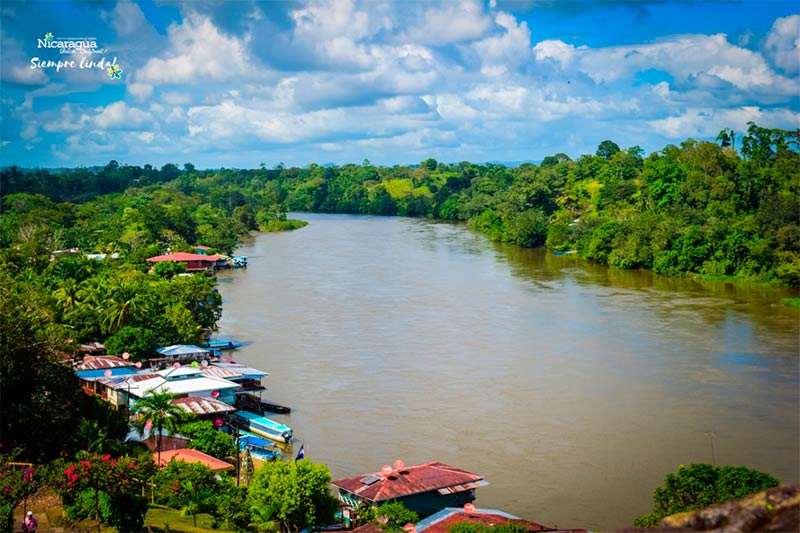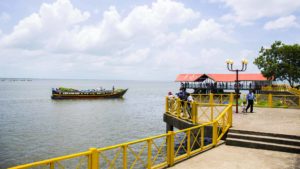Its boundaries are:
- To the north, with the Department of Chontales and South Caribbean Coast Autonomous Region (RACCS).
- The south by the Republic of Costa Rica.
- The east by the Atlantic Ocean.
- To the west, in Lake Nicaragua and the Department of Rivas.
 The Río San Juan, or “desaguadero” (drain), to as it was called at first instance, was discovered by Spanish conquistadors in 1525. The Spanish were aware of the importance of controlling the passage between the lake and the ocean, so two years later they founded San Carlos and continued the search for the exit of the river in the Caribbean.They spent 14 years of trying expedition, until finally, in 1539, was discovered the mouth of the river in the ocean.
The Río San Juan, or “desaguadero” (drain), to as it was called at first instance, was discovered by Spanish conquistadors in 1525. The Spanish were aware of the importance of controlling the passage between the lake and the ocean, so two years later they founded San Carlos and continued the search for the exit of the river in the Caribbean.They spent 14 years of trying expedition, until finally, in 1539, was discovered the mouth of the river in the ocean.
The river proved to be a great connection for the Province of Nicaragua with the rest of the Spanish territory. Through it, Granada and other colonies traded with cities such as Havana, Cartagena and Portobelo. This was known by the pirates who roamed the Caribbean, and soon made inroads through San Juan.
Entered the river pirates and buccaneers like Henry Morgan, John Davis, John Morris, Harrison, François l’Ollonais, among others. Although they were sometimes rejected, most of the time they took the fort of San Carlos, and then attack the city of Granada and León, where they took treasures, public goods and prisoners.
 To defend the passage of the river, the Spanish began to build fortifications along its banks. At one time there were up to 12 forts along the San Juan. The largest of them, and first to be built (1675) was la Fortaleza de la inmaculada concepción (the Castle of the Immaculate Conception).This fortress survived fierce battles against pirates, Miskitus (it was a kingdom established in the Caribbean Indigenous and supported by England), American filibusters and especially British troops.
To defend the passage of the river, the Spanish began to build fortifications along its banks. At one time there were up to 12 forts along the San Juan. The largest of them, and first to be built (1675) was la Fortaleza de la inmaculada concepción (the Castle of the Immaculate Conception).This fortress survived fierce battles against pirates, Miskitus (it was a kingdom established in the Caribbean Indigenous and supported by England), American filibusters and especially British troops.
During the years of war between Spain and England, a substantial British force and attempted to take the river Miskitus. In the El Castillo, the head of the garrison had been killed before the attack, and it was his daughter, the heroine Rafaela Herrera, who led the defense against a superior force of invaders, who could not take the fortress.
Years later, the famous English Admiral Horatio Nelson marine military was in his youth, one of the commanders who led an offensive against the Spanish territories, during which he took San Juan del Norte, now San Juan de Nicaragua, and then, after a fierce battle that lasted 18 days, took the Castle. The English invasion could not continue, and soon left the river due to illness and lack of supplies.
Having witnessed this and many other historical events, people began to lose interest in the San Juan River after construction of the Panama Canal and left the area, which made it an idle. This was a good result for the environment because they let nature take control and so far is an amazing wildlife and spectacular flora that dominates this great and beautiful river.

